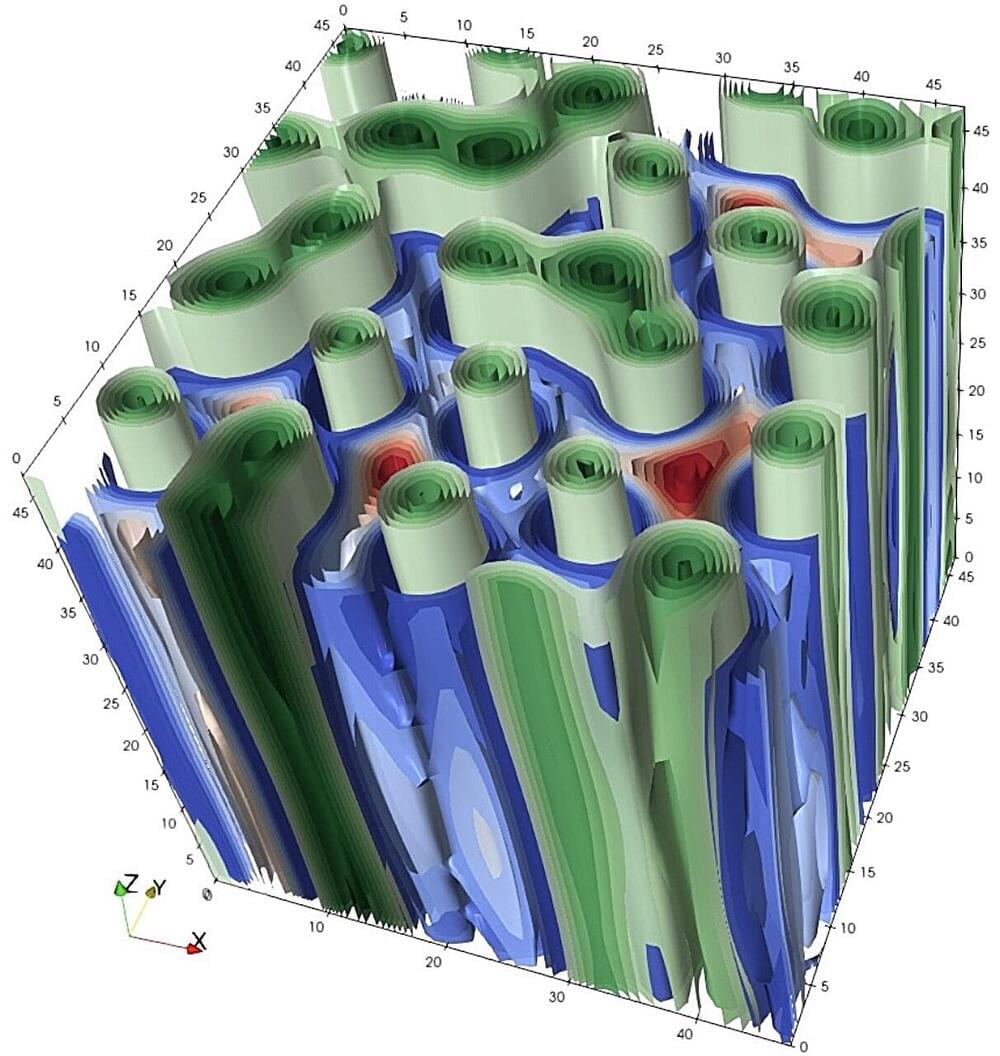Jan 25, 2024
Coal: Don’t Burn It, Compute With It
Posted by Dan Breeden in categories: energy, materials
A certain fossil fuel works well as a 2D insulating films that could help launch a new era of semiconductors made with 2D materials.
A certain fossil fuel works well as a 2D insulating films that could help launch a new era of semiconductors made with 2D materials.
A team of researchers from the Institute for Optoelectronic Systems and Microtechnology at Universidad Politécnica de Madrid (UPM) has designed a biosensor capable of identifying proteins and peptides in quantities as low as a single monolayer. For that, a surface acoustic wave (SAW), a kind of electrically controlled nano earthquake on a chip, is generated with an integrated transducer to act on a stack of 2D materials coated with the biomolecules to be detected.
As they report in the journal Biosensors and Bioelectronics in an article titled “Surface–acoustic-wave-driven graphene plasmonic sensor for fingerprinting ultrathin biolayers down to the monolayer limit,” the SAW would ripple the surface of a graphene-based stack in such a way that it confines mid–infrared light to very small volumes, enhancing light-matter interactions at the nanoscale.
In particular, quasiparticles that are part light (photons) and part matter (electrons and lattice vibrations), called surface plasmon-phonon polaritons, are formed at the rippled stack interplaying strongly with the molecules atop.
Researchers have developed a new spectroscopy method to study ultrafast processes in strongly correlated materials, achieving sub-femtosecond resolution.
An international team of researchers from the European XFEL together with colleagues from the Max Born Institute in Berlin, the Universities of Berlin and Hamburg, The University of Tokyo, the Japanese National Institute of Advanced Industrial Science and Technology (AIST), the Dutch Radboud University, Imperial College London, and Hamburg Center for Ultrafast Imaging, have presented new ideas for ultrafast multi-dimensional spectroscopy of strongly correlated solids. This work will be published today (January 24) in Nature Photonics.
Exploring Strongly Correlated Solids

The discovery of superconductivity more than a century ago has significantly changed our world.
The story began in 1911 when the Dutch physicist Heike Kamerlingh Onnes observed that the electrical resistance of mercury abruptly dropped to zero when it was cooled to a temperature of about 4 Kelvin (approximately 269°C)—a bit colder than the boiling point of liquid helium.
Certain materials have desirable properties that are hidden, and just as you would use a flashlight to see in the dark, scientists can use light to uncover these properties.
Researchers at the University of California San Diego have used an advanced optical technique to learn more about a quantum material called Ta2NiSe5 (TNS). Their work appears in Nature Materials.
Materials can be perturbed through different external stimuli, often with changes in temperature or pressure; however, because light is the fastest thing in the universe, materials will respond very quickly to optical stimuli, revealing properties that would otherwise remain hidden.
Scientists and engineers have been pushing for the past decade to leverage an elusive ferroelectric material called hafnium oxide, or hafnia, to usher in the next generation of computing memory.
Scientists outline new processes for leveraging the ferroelectric features of hafnia with the aim of enhancing high-performance computing.
In physics, scientists have been fascinated by the mysterious behavior of superconductors—materials that can conduct electricity with zero resistance when cooled to extremely low temperatures. Within these superconducting systems, electrons team up in “Cooper pairs” because they’re attracted to each other due to vibrations in the material called phonons.
As a thermodynamic phase of matter, superconductors typically exist in an equilibrium state. But recently, researchers at JILA became interested in kicking these materials into excited states and exploring the ensuing dynamics. As reported in a new Nature paper, the theory and experiment teams of JILA and NIST Fellows Ana Maria Rey and James K. Thompson, in collaboration with Prof. Robert Lewis-Swan at the University of Oklahoma, simulated superconductivity under such excited conditions using an atom-cavity system.
Instead of dealing with actual superconducting materials, the scientists harnessed the behavior of strontium atoms, laser-cooled to 10 millionths of a degree above absolute zero and levitated within an optical cavity built out of mirrors.
Researchers from university in southern China say their porous material has high mechanical strength and thermal insulation properties.
Richard Mansell, Chief Executive Officer at IVO Limited gave the reasons he is optimistic about the Quantum Space Drive tests that will be done in orbital microgravity.
IF the orbital test works then it will lead to interstellar travel and shrinking it down would give material that would have anti-gravity like effects. We would spend the money to make nanocavities so that we could have propellantless thrust for floating cities. All of space and propulsion related science fiction would become possible within about three decades short of faster than light. This drive is in orbit now for a few months. I think DARPA gave them more money to conclusively prove if it works or not. All of the ground tests show it might work. But if it proves out then we first get 1,000 times better than a hall effect thruster but with no fuel limit. No fuel is used. So long as you have power, solar or nuclear the drive keeps working. So nuclear fuel supply for decades then thrust for decades. The theory proves out, then we make nanocavities which could act like antigravity then we get 1G or even 3G thrusters in space. This would be the Expanse TV show tech.
